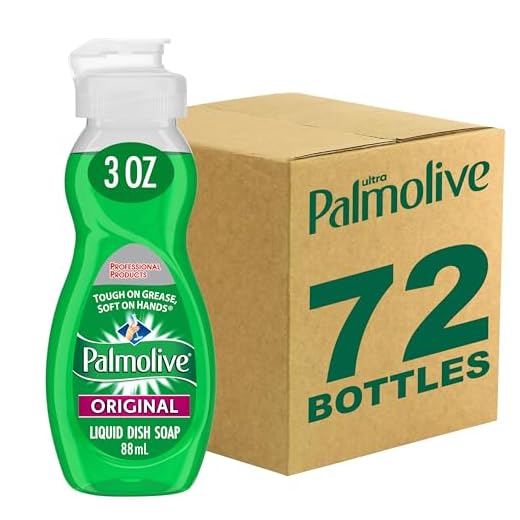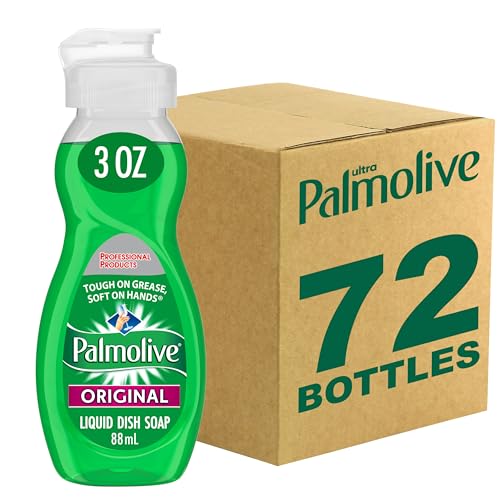




A rice cooker is an essential kitchen appliance that helps you cook rice perfectly every time. However, over time, the lid of the rice cooker can become dirty and accumulate food residue, making it important to clean it regularly. Cleaning the rice cooker lid not only ensures that your rice is cooked in a hygienic environment but also improves the overall performance and durability of the appliance.
Before cleaning the rice cooker lid, it is crucial to unplug the appliance and allow it to cool down completely. Once the rice cooker is cool to the touch, you can begin the cleaning process. Start by removing the lid from the rice cooker and inspecting it for any visible dirt or stains.
To clean the rice cooker lid, prepare a cleaning solution by mixing warm water with a mild dish soap or vinegar. Gently dip a soft sponge or cloth into the cleaning solution and wipe the lid, paying special attention to any stubborn stains or grease. Avoid using abrasive cleaners or scouring pads, as they can scratch the surface of the lid.
Pro tip: For stubborn stains or buildup, you can create a paste by mixing baking soda with water. Apply the paste to the affected areas and let it sit for a few minutes before scrubbing it gently with a soft sponge or brush. Rinse the lid thoroughly with warm water to remove any residue.
After cleaning the rice cooker lid, rinse it with warm water to remove any cleaning solution residue. Use a clean, dry cloth to pat the lid dry or allow it to air dry completely before placing it back on the rice cooker. It is important to ensure that the lid is completely dry to prevent any moisture from affecting the appliance’s functionality or causing mold growth.
Regularly cleaning the rice cooker lid not only keeps your rice cooker looking its best but also ensures that it remains in optimal condition for longer. By following these simple steps and incorporating them into your regular cleaning routine, you can enjoy perfectly cooked rice and extend the lifespan of your rice cooker.
Importance of Cleaning Rice Cooker Lid
Cleaning the rice cooker lid is an essential part of maintaining the appliance and ensuring that your cooked rice is safe to eat. Here are a few reasons why cleaning the rice cooker lid is important:
1. Food Safety: The rice cooker lid comes into direct contact with the rice while it is cooking. Over time, food particles, oils, and stains can build up on the lid, creating a breeding ground for bacteria and germs. By regularly cleaning the lid, you can prevent the growth of harmful microorganisms and keep your cooked rice safe to consume.
2. Improved Performance: A dirty rice cooker lid can impact the performance of your appliance. The buildup of food particles and stains can interfere with the proper sealing of the lid, leading to steam leakage. This can result in longer cooking times and poorly cooked rice. Cleaning the lid ensures a proper seal and allows the rice cooker to function optimally.
3. Longevity: Regular cleaning of the rice cooker lid helps to extend the lifespan of the appliance. The accumulation of food residue can corrode the lid and other parts of the rice cooker, causing them to deteriorate faster. By cleaning the lid, you can prevent corrosion and maintain the functionality of your rice cooker for longer.
Overall, cleaning the rice cooker lid is crucial for food safety, improved performance, and the longevity of your appliance. Make sure to follow the manufacturer’s instructions for cleaning and always keep your rice cooker lid in optimal condition.
Tools and Materials Required for Cleaning
To clean the rice cooker lid, you will need the following tools and materials:
- Dish soap: Choose a mild dish soap that is gentle on your hands, but effective in removing grease and grime.
- Warm water: Use warm water to help dissolve any oil or residue on the lid.
- Soft sponge or cloth: A soft sponge or cloth is ideal for scrubbing the lid without scratching the surface.
- Vinegar: If there are stubborn stains or odors, vinegar can be an effective natural cleaner.
- Cotton swabs: Cotton swabs are useful for reaching into small crevices or tight corners.
- Old toothbrush: An old toothbrush can be handy for scrubbing hard-to-reach areas.
- Dry cloth or towel: Use a dry cloth or towel to wipe the lid dry after cleaning.
By having these tools and materials ready, you’ll be well-prepared to clean your rice cooker lid thoroughly and efficiently.
Step-by-Step Guide on Cleaning Rice Cooker Lid
Cleaning the rice cooker lid is an essential part of maintaining your appliance in good condition. Over time, food particles and residue can build up on the lid, affecting the quality of your cooked rice. Follow these steps to effectively clean your rice cooker lid:
1. Unplug the rice cooker from the power source and allow it to cool down completely. Cleaning the lid while it’s hot can cause burns or damage to the appliance.
2. Remove the inner cooking pot from the rice cooker and set it aside. The lid can be easier to clean when the pot is removed.
3. Fill a sink or basin with warm soapy water. You can use dish soap or a gentle cleaner suitable for kitchen appliances.
4. Submerge the rice cooker lid in the soapy water and let it soak for a few minutes. This will help loosen any stuck-on food or residue.
5. After soaking, use a soft sponge or cloth to scrub the lid gently. Pay close attention to the edges and corners where dirt and grime tend to accumulate.
6. Rinse the lid thoroughly under running water to remove any remaining soap residue.
7. Inspect the lid for any stubborn stains or debris. If necessary, you can use a non-abrasive brush or toothbrush to gently scrub away the stains.
8. Once the lid is clean, dry it with a clean towel or allow it to air dry completely before placing it back on the rice cooker.
9. Finally, clean the inner cooking pot using the same process to ensure a thorough cleaning of your rice cooker.
Regularly cleaning your rice cooker lid will help maintain its performance and extend its lifespan. By following these steps, you can enjoy perfectly cooked rice without any unwanted flavors or residue.
Tips for Maintaining a Clean Lid
Safely cleaning the lid of your rice cooker is essential to maintain its longevity and efficiency. Follow these tips to keep your rice cooker lid clean and in good condition:
1. Regular Wipe Down
After each use, take a damp cloth or sponge and gently wipe down the exterior and interior of the lid. This will help remove any spills or stains and prevent any buildup.
2. Vinegar Solution
If the lid has tough stains or residue, you can soak it in a solution of vinegar and water. Mix equal parts vinegar and water in a bowl or sink and let the lid soak for about 15-20 minutes. After soaking, scrub the lid gently with a soft brush or cloth and rinse thoroughly.
3. Baking Soda Paste
A baking soda paste can also be effective in removing stains and odors from the rice cooker lid. Mix baking soda with a small amount of water to form a paste, then apply it to the stained areas on the lid. Allow it to sit for about 10 minutes before scrubbing with a soft brush or cloth. Rinse thoroughly afterwards.
4. Avoid Abrasive Cleaners
Avoid using abrasive cleaners or scrub brushes on the rice cooker lid, as they can scratch the surface and damage the sealing mechanism. Stick to softer cleaning tools to avoid any potential damage.
5. Air Dry and Store Properly
After cleaning, make sure the lid is completely dry before placing it back on the rice cooker. Properly store the rice cooker with the lid detached to allow air circulation and prevent any moisture buildup.
Following these tips will help you maintain a clean and functional rice cooker lid for years to come.
Benefits of Regularly Cleaning Rice Cooker Lid
Regularly cleaning the lid of your rice cooker is an essential part of maintaining hygiene and ensuring the longevity of your appliance. Here are some benefits of keeping the rice cooker lid clean:
1. Prevention of Bacterial Growth
Over time, the rice cooker lid can accumulate food particles and moisture, creating the perfect environment for bacterial growth. Regular cleaning helps to eliminate these potential breeding grounds for harmful bacteria, reducing the risk of foodborne illnesses.
2. Improved Rice Quality
A clean rice cooker lid ensures that no residue or food particles contaminate the cooking process. This results in better-tasting rice and prevents any unpleasant flavors or odors from transferring to the cooked rice.
3. Longer Lifespan of the Appliance
Regular cleaning removes any sticky or greasy residues from the lid, which can accumulate over time and affect the performance of the rice cooker. By keeping the lid clean, you can prevent any damage or malfunction that could shorten the lifespan of the appliance.
It is recommended to clean the rice cooker lid after each use to maintain optimal cleanliness and functionality.
Q&A
How often should I clean my rice cooker lid?
It is recommended to clean your rice cooker lid after every use to ensure proper hygiene and prevent any build-up.
What is the best way to clean a rice cooker lid?
The best way to clean a rice cooker lid is by removing it from the cooker and washing it with warm soapy water. Use a sponge or cloth to remove any residue or stains. Rinse it thoroughly and dry it before reattaching it to the cooker.
Can I put the rice cooker lid in the dishwasher?
It depends on the manufacturer’s instructions. Some rice cooker lids are dishwasher safe, while others are not. It is best to refer to the user manual or contact the manufacturer to determine if your rice cooker lid can be washed in the dishwasher.
What should I do if there is stubborn residue on my rice cooker lid?
If there is stubborn residue on your rice cooker lid, you can try soaking it in warm soapy water for a few minutes to loosen the residue. Then, use a sponge or brush to scrub it off. If the residue still persists, you can try using a mild abrasive cleaner or vinegar to help remove it.
Is it necessary to clean the inner side of the rice cooker lid?
Yes, it is necessary to clean the inner side of the rice cooker lid as it can accumulate dirt, debris, and steam residue during the cooking process. Cleaning the inner side will help maintain the cleanliness and efficiency of your rice cooker.
What is the best way to clean a rice cooker lid?
The best way to clean a rice cooker lid is by removing it from the cooker and washing it with warm soapy water. You can use a sponge or cloth to gently scrub away any stuck-on food or residue. Rinse the lid thoroughly with water and dry it completely before putting it back on the cooker.
Can I put the rice cooker lid in the dishwasher?
It depends on the manufacturer’s instructions. Some rice cooker lids are dishwasher-safe, while others are not. Check the user manual or the label on the lid for specific cleaning instructions. If the lid is dishwasher-safe, you can place it in the top rack of the dishwasher for easy cleaning. However, it is always a good idea to hand wash the lid to prolong its lifespan.






